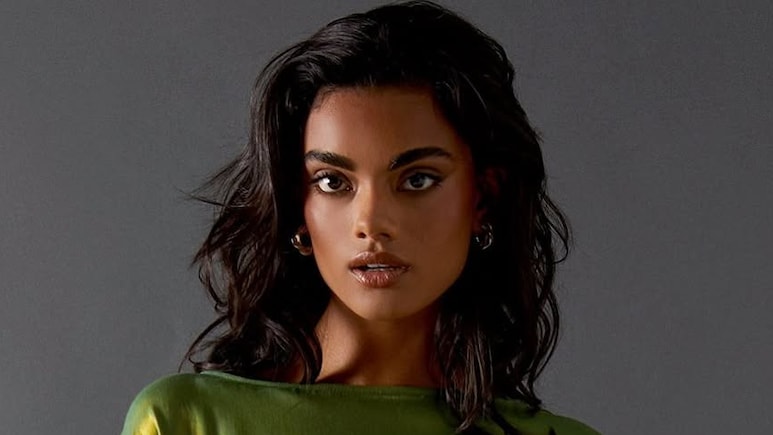
Models in India are speaking up louder than ever, and it's not for the camera.
In a hard-hitting Instagram post, model Roshni Sharma pulled back the curtain on the glam of India's fashion industry, exposing the dismal state of model payments.
"Fashion week rates for pool models should start at ₹40,000 a day, with travel and stay included. If you've walked before, don't let anyone make you feel insecure. Ask for what you deserve," she wrote in the caption.
Roshni's post and the accompanying video triggered a wave of responses from other models across the industry, many of whom shared experiences of being overworked, underpaid, and routinely devalued. NDTV spoke to a few of the models.
"12-Hour Days, ₹6,000 Pay - And No Food"
"I've done shows where I was called in at 9 AM for a 9:30 PM show, and paid just ₹6,000 and sometimes nothing at all," says Teajay Gil, 27, a model with nine years in the industry. "No pay for fittings, no travel reimbursement, and terrible food. Often, we buy our own meals."
According to Teajay, male models routinely get booked for as little as ₹6,000–₹7,000 per show. "Show directors even brag to clients about how little they paid a model," he adds. "Ideal rates should be ₹15,000–₹35,000 for male models and ₹20,000 - ₹50,000 for female models per day, per show. And fittings must be paid for."
"A Commercial Budgeted At ₹4 Lakhs Was Offered To Me For ₹35,000"
It's not just fashion weeks. Ramp and print models are also being edged out of brand campaigns and TV commercials by influencers - while middlemen allegedly pocket the budget difference.
"I was offered ₹35,000 for a 12-hour shoot for a global brand that was going to use my face across print, cinema, TV, and digital. I posted a screenshot, and they upped it to ₹80,000. Still not enough. The brand budget was clearly way more. So, where's the money going?" Teajay pointed out the unfairness.
He also highlights unpaid backstage photo shoots. "They ask us to pose before the show in full gear. There's lighting, photographers, everything, it's basically a shoot. But we don't get paid for it."
"Social Media Has Made Everyone A ‘Model' And That's Hurting Us"
Shimei Nathan, a 23-year-old model, says the rise of "influencer modelling" has severely impacted professionals like her.
"Now, anyone with a phone and a few followers calls themselves a model," she says. "Brands exploit that. They ask us to work for free for exposure, but exposure doesn't pay bills."
She adds, "Agencies are asking us to grow our social presence to get work. But shouldn't brands pay more if they want to use our social media too?"
"Models Are Treated Like Hangers"
Veteran beauty expert Elton J Fernandez, who's worked in the industry for over two decades, recalls what he sees backstage. "Models, even those who've worked for 15–20 years, are treated as hangers. Meanwhile, actors walking as showstoppers are pampered, prioritised, and promoted.”
Elton calls it “dignity disparity.” While influencers earn lakhs for a single Instagram reel, models walk in shows for ₹10,000. “And we - makeup and hair artists - are given ₹4,000 per model for both hair and makeup. For men, even less. The cost of just one quality mascara is ₹1,500."
He asks: "Why is everyone in the ecosystem - designers, corporates, influencers - making money, except those who actually create the magic?"
"It's A Power Game. Speak Up, And You're Blacklisted"
The issue isn't just about money. It's about fear and silence. "If you raise your voice, you're seen as ‘difficult'," says Elton. "You get blacklisted. I once called out a top designer for mistreating a model, and I never got work from them again."
Elton adds, "Exploitation doesn't have to be sexual to be valid. Today's oppression is more invisible, more strategic, and just as damaging."
"The Cycle Of Undervaluation Has To Break"
Actor Smaran Sahu adds that the rot runs across industries. "Post-COVID, budgets have been slashed. But while productions still roll, it's the actors and models who are forced to work for half and sometimes a third of what they were paid earlier. There's always someone willing to do it for less."
But that, he says, sets off a dangerous cycle: "When the most visible part of your creative output - the face, the body, the performance - is devalued, it lowers the quality of the entire industry."
So, What Now?
The Indian fashion and advertising industry is at a crossroads where inclusivity and aesthetics have grown, but dignity and fair pay have not.
Models like Roshni, Teajay, and Shimei are asking for transparency, better contracts, paid fittings, fair compensation for social media usage, and above all - respect. They're also urging newer models not to undercut rates just for a foot in the door.
As Roshni Sharma said in her post: "If you've got experience, don't be afraid to ask for more. A viral reel won't put food on your plate."
The question now, is - will the industry finally listen?
Track Latest News Live on NDTV.com and get news updates from India and around the world


